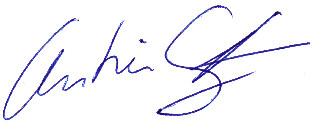|
Dear Readers,
I am very excited to announce the impact factor for 2017, which is the
highest impact factor in the 24-year history of our journal. According
to the new 2018 JCR, the impact factor of our journal was
substantially improved from 0.696 in 2016 to 1.066 in 2017. The 5 year
impact factor is now 0.863. Such a success is only possible because of
the excellent reviews and the promotion of our journal by the
editorial board, the excellent work of the publishing team and the
technical support, the very generous support by the J.UCS consortium,
but most importantly by the high quality contributions of the
authors. Allow me to thank for all your efforts which resulted in this
notable success, and I hope we can keep up this great collaboration in
the future.
In the second regular issue of 2018, I am pleased to introduce 6
accepted papers from authors of 10 different countries.
In their collaborative research between Brazil and
Chile, Thiago S. Barcelos, Roberto Munoz,
Rodolfo Villarroel, Erick Merino, and Ismar F. Silveira report
about their finding of an extensive and systematic literature review
about computational thinking for math
learning. Alfonso Garcia-de-Prado, Guadalupe
Ortiz, Juan Boubeta-Puig, and David Corral-Plaza from Spain
present in their paper Air4People, an air quality monitoring and
context-aware notification system, which submits personalized alerts
to citizens based on several types of context, whenever air
quality-related health risks are detected for their particular
context. Waldemar Graniszewski, Jacek Krupski,
and Krzysztof Szczypiorski from Poland introduce in their paper a
new steganographic method where the covert channel is created within
the HTTP protocol header, more specifically in the trailer field
1. Andrea Huszti and Zita Kovács from
Hungary present in their work a reductionist proof for sender
anonymity of an asymmetric bilinear pairing based mixnet
(BILMIX). Stephan G. Lukosch, Mariëlle den
Hengst-Bruggeling, Corine H.G. Horsch, Dragos Datcu and Hendrik
Engelbrecht from Netherlands describe in their paper a mobile
location-based real-time notification system for frontline police
officers discuss their findings of an exploratory study in two
real-life experiments. In a collaboration between Saudi Arabia, UK and
Egypt, Alaa A. Qaffas, Alexandra I. Cristea, and
Mohamed A. Mead aim in their paper at a lightweight adaptive
e-advertising model, the Layered Adaptive Advertising Integration
(LAAI).
In a collaborative work between Belgium and Italy, Yvet Wautelet,
Manuel Kolp, and Loris Penserini outline the use and validation of a
software analysis and project management framework for
iterativesoftware development within the Tropos method.
Enjoy reading!
Cordially,

Christian Gütl, Managing Editor
Graz University of Technology, Graz, Austria
Email: cguetl@iicm.edu
|
